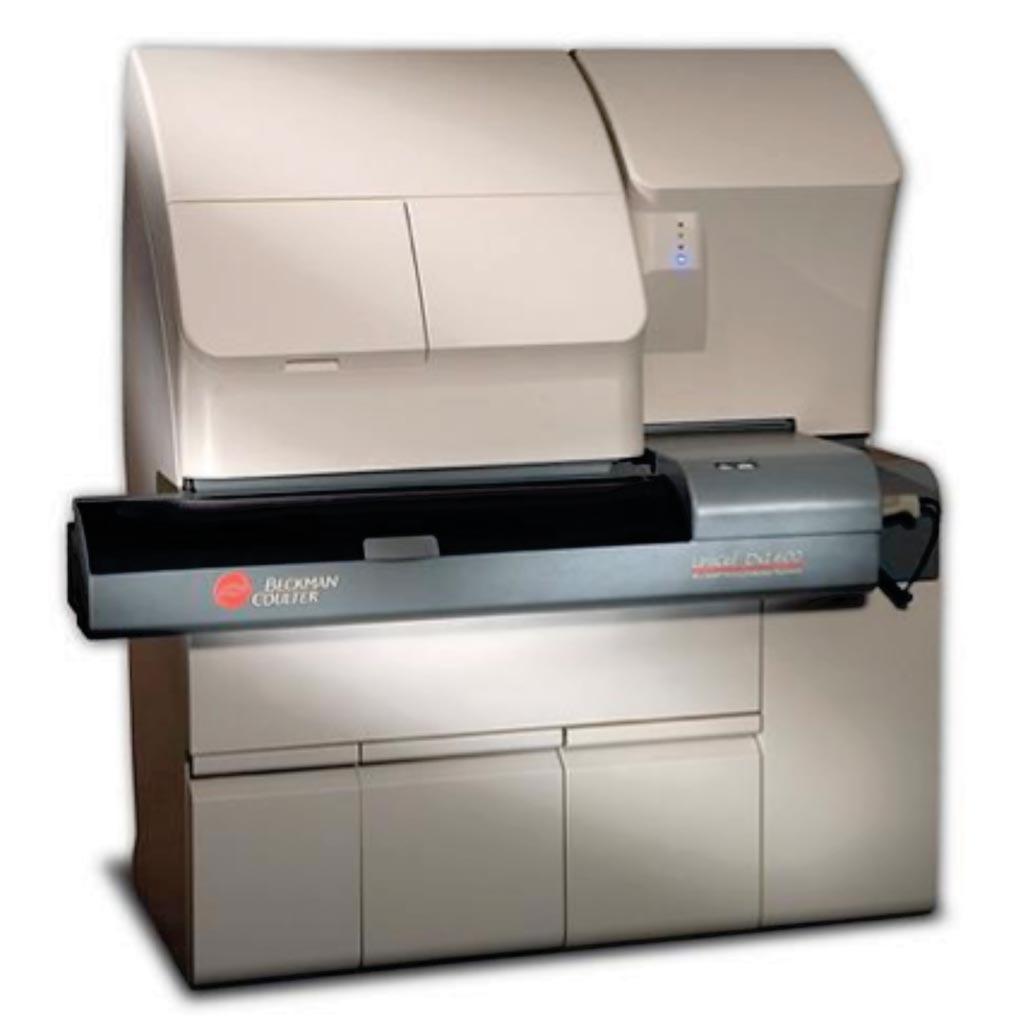Blood Biomarkers Help Diagnose Obstructive Sleep Apnea
By LabMedica International staff writers
Posted on 26 Jun 2018
The relationship between obstructive sleep apnea (OSA) and blood biomarkers has been assessed and the hypothesis tested that combinations of markers provide a characteristic OSA signature with diagnostic screening value.Posted on 26 Jun 2018
Obstructive sleep apnea is a highly prevalent disorder associated with increased risk for cardiovascular disease, diabetes, and other chronic conditions. Unfortunately, up to 90% of individuals with OSA remain without a diagnosis or therapy.

Image: The UniCel Dxl 800 Access 2 immunoassay system (Photo courtesy of Beckman Coulter).
A team of scientists from various institutions working with Stanford Medical School (Palo Alto, CA, USA) consecutively enrolled, in a multicenter prospective study, 264 adult male subjects with clinically suspected OSA. All subjects underwent overnight sleep studies. An asymptomatic control group of 20 individual’s was also studied. The team collected blood samples in EDTA and serum (SST) tubes at the time of study enrollment prior to initiation of therapy, within one day (median) of the sleep study (interquartile range [IQR] 0–3days).
The scientists tested five biomarkers: glycated hemoglobin (HbA1c), high sensitivity C-reactive protein (CRP), interleukin-6 (IL-6), uric acid, and erythropoietin (EPO). These were selected as the most predictive markers from a feasibility study in which 11 biomarkers were assessed. Samples were tested on the following systems: Beckman Coulter AU System (HbA1c, CRP, and uric acid), and Beckman Coulter UniCel Access 2 System (EPO and IL-6).
The scientists reported that the combination of HbA1c+CRP+EPO (area under the curve 0.78) was superior to the Epworth Sleepiness Scale (ESS; 0.53) and STOP-Bang (0.70) questionnaires. In non-obese subjects, the combination of biomarkers (0.75) was superior to body mass index (BMI; 0.61). Sensitivity and specificity results, respectively, were: HbA1c+CRP+EPO (81% and 60%), ESS (78% and 19%), STOP-Bang (75% and 52%), BMI (81% and 56%), and BMI in non-obese patients (81% and 38%). The most significant associations of biomarkers with OSA severity indices were for CRP and HbA1c.
The authors concluded that concurrent elevations of HbA1c, CRP, and EPO levels should generate a high suspicion of OSA and may have utility as an OSA screening tool. Biomarker combinations correlate with OSA severity and, therefore, may assist sleep centers in identifying and triaging higher risk patients for sleep study diagnosis and treatment. The study was published on June 14, 2018, in the journal Nature and Science of Sleep.
Related Links:
Stanford Medical School













